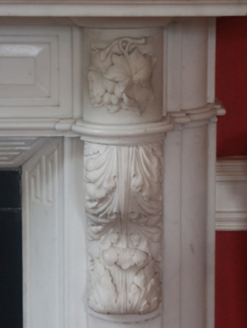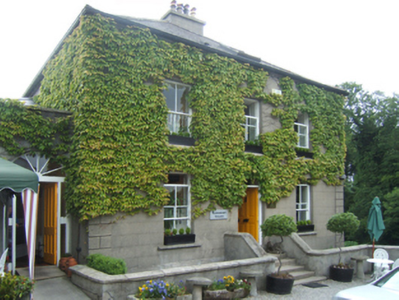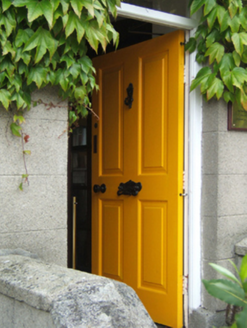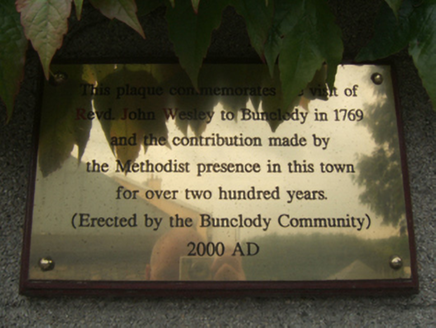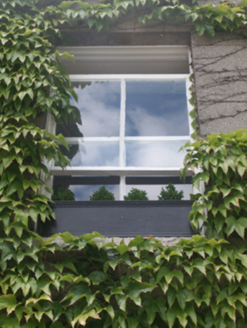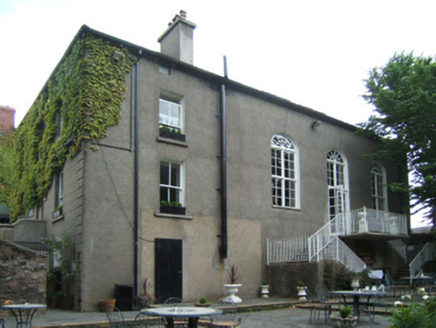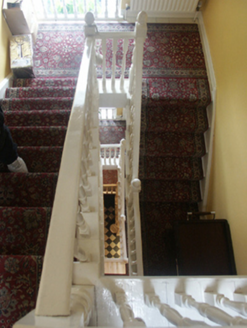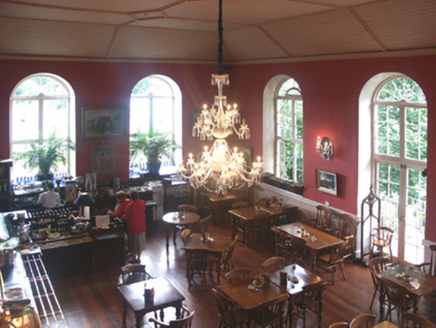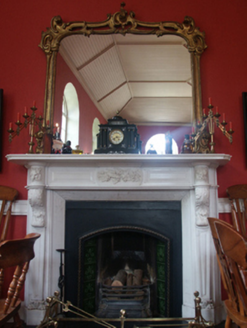Survey Data
Reg No
15602069
Rating
Regional
Categories of Special Interest
Architectural, Artistic, Historical, Social
Previous Name
Bunclody Methodist Church
Original Use
Manse
Date
1805 - 1810
Coordinates
291236, 156870
Date Recorded
14/06/2005
Date Updated
--/--/--
Description
Detached three-bay (single-bay deep) two-storey over basement manse with dormer attic, built 1808-9, on a rectangular plan abutting three-bay double-height over basement single-cell Methodist church (west) on a rectangular plan. Occupied, 1901; 1911. For sale, 1978. Sold, 1979. Renovated, 1994, to accommodate alternative use. Hipped slate roof on King post timber construction with clay ridge tiles, rendered, ruled and lined off-central chimney stack having cut-granite capping supporting terracotta or yellow terracotta tapered pots, off-central rooflight to front (east) pitch, and replacement uPVC rainwater goods on rendered eaves. Creeper- or ivy-covered rendered, ruled and lined wall to front (east) elevation with rusticated rendered piers to ends; part creeper- or ivy-covered fine roughcast surface finish (remainder). Square-headed central door opening approached by flight of five steps with concealed dressings framing timber panelled door having overlight. Square-headed window openings with cut-granite sills, and concealed dressings framing three-over-six (basement) or two-over-two timber sash windows. Round-headed window openings in bipartite arrangement (east) with cut-granite sills, timber cruciform mullions, and concealed dressings framing timber casement windows having overlights. Interior including (ground floor): remodelled hall retaining carved timber surrounds to door openings framing timber panelled doors with carved timber surrounds to window openings framing timber panelled shutters, cut-veined white marble chimneypiece, and moulded plasterwork cornices to ceilings; staircase hall (south) retaining carved timber surrounds to door openings framing timber panelled doors, cantilevered staircase on a dog leg plan with turned timber "spindle" balusters supporting timber banisters terminating in acorn finial-topped turned timber newels, timber panelled shutters to window openings to half-landings, and carved timber surrounds to door openings to landings framing timber panelled doors; (first floor) remodelled room retaining carved timber surround to door opening framing timber panelled door with carved timber surrounds to window openings framing timber panelled shutters, and moulded plasterwork cornices to ceilings; full-height interior (church) retaining carved timber surround to door opening framing timber panelled door, "Acanthus"-detailed cut-white marble Classical-style chimneypiece, and timber boarded or tongue-and-groove timber panelled vaulted ceiling in carved timber frame on carved timber cornice. Set in landscaped grounds.
Appraisal
A manse-cum-church erected by Reverend John Wilson (----) representing an important component of the ecclesiastical heritage of north County Wexford with the architectural value of the composition, one entrenching a Wesleyan Methodist congregation in Bunclody [Newtownbarry] following earlier preaching visits (1769; 1787) by the founding father John Wesley (1703-91), confirmed by such attributes as the compact rectilinear plan form housing a manse and church under one roof; the symmetrical frontage centred on a somewhat featureless doorcase; and the diminishing in scale of the openings on each floor producing a graduated visual impression with the church showing an "arcade" of elegant bipartite glazing patterns. Having been well maintained, the elementary form and massing survive intact together with substantial quantities of the original fabric, both to the exterior and to the interior where contemporary joinery; Classical-style chimneypieces; and sleek plasterwork refinements, all highlight the artistic potential of a manse-cum-church making a pleasing visual statement in Market Square. NOTE: Occupied (1901) by Reverend Thomas Moore (----), 'Methodist Minister' (NA 1901); and (1911) by William John Young (----), 'Methodist Minister' (NA 1911).
